Abstract
Employing Bacillus cereus strain 2, we examined the fate of two chromosomes contained in vegetative cells in the course of sporulation. Cytological observations and quantitative estimation of deoxyribonucleic acid (DNA) confirmed the earlier observations that, during the course of sporulation, one of two chromosomes of the vegetative cell was incorporated into the sporangium and the other disappeared into the medium as the result of cell lysis. Log-phase cells, labeled completely with thymine-2-14C in the presence of deoxyadenosine, were cultured in the “cold” glucose-glutamate-glycine-salts medium, and culture samples, taken at intervals at successive generations, were subjected to sporulation in glutamate-salts medium. The percentage of radioactivity in the spores separated from each culture remained almost unchanged at nearly 50% and was independent of the number of generations of the preceding culture in the “cold” medium. This suggests that the selective incorporation into the sporangium of either the “older” or “younger” chromosome of a vegetative cell does not occur in the course of spore formation. Some examples of the selective and nonselective behavior of DNA molecules in cellular events in microorganisms are cited.
Full text
PDF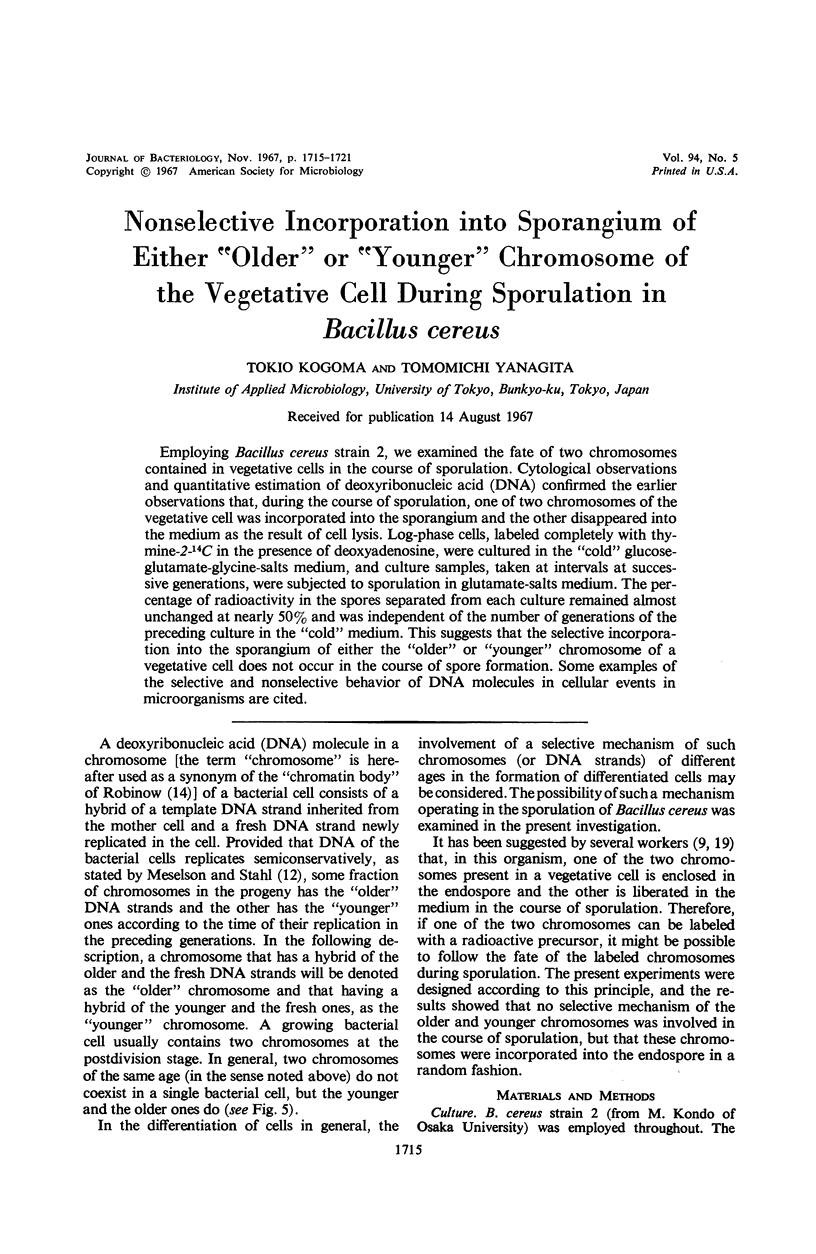
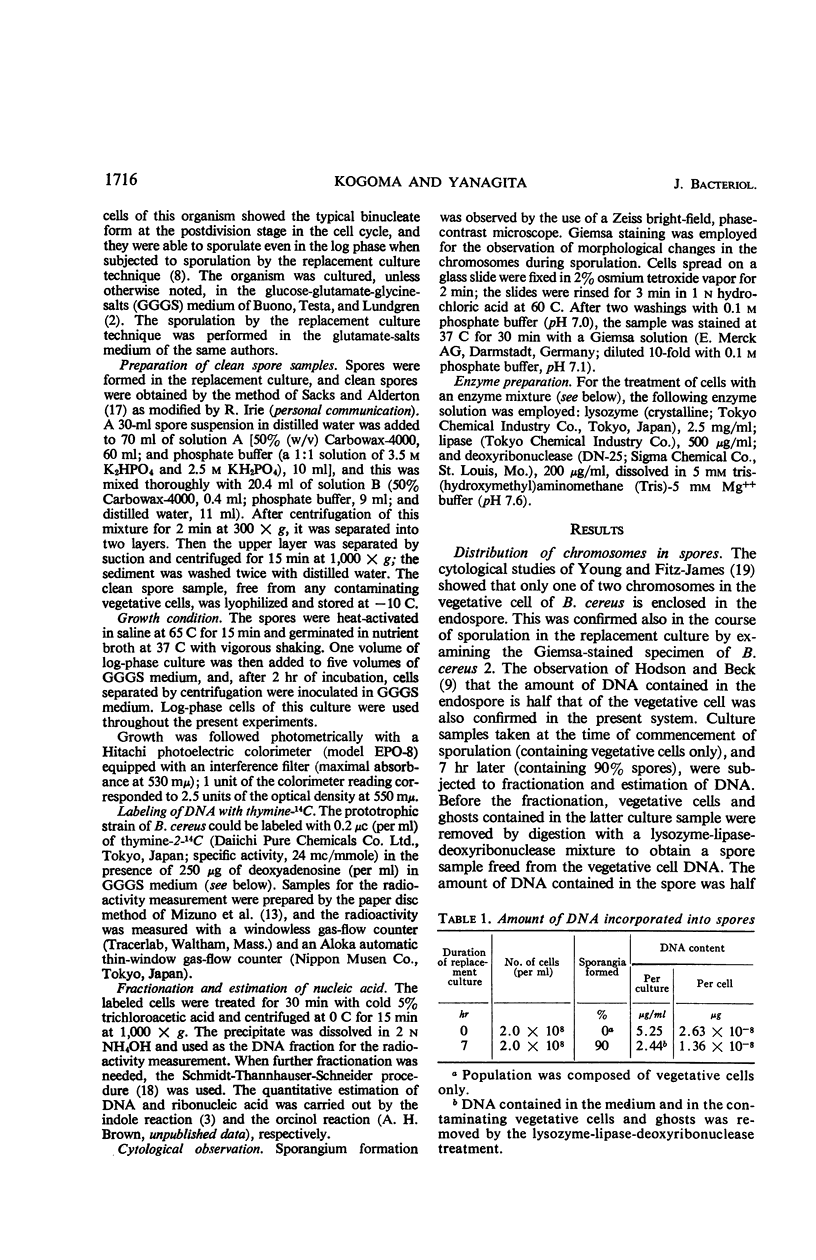
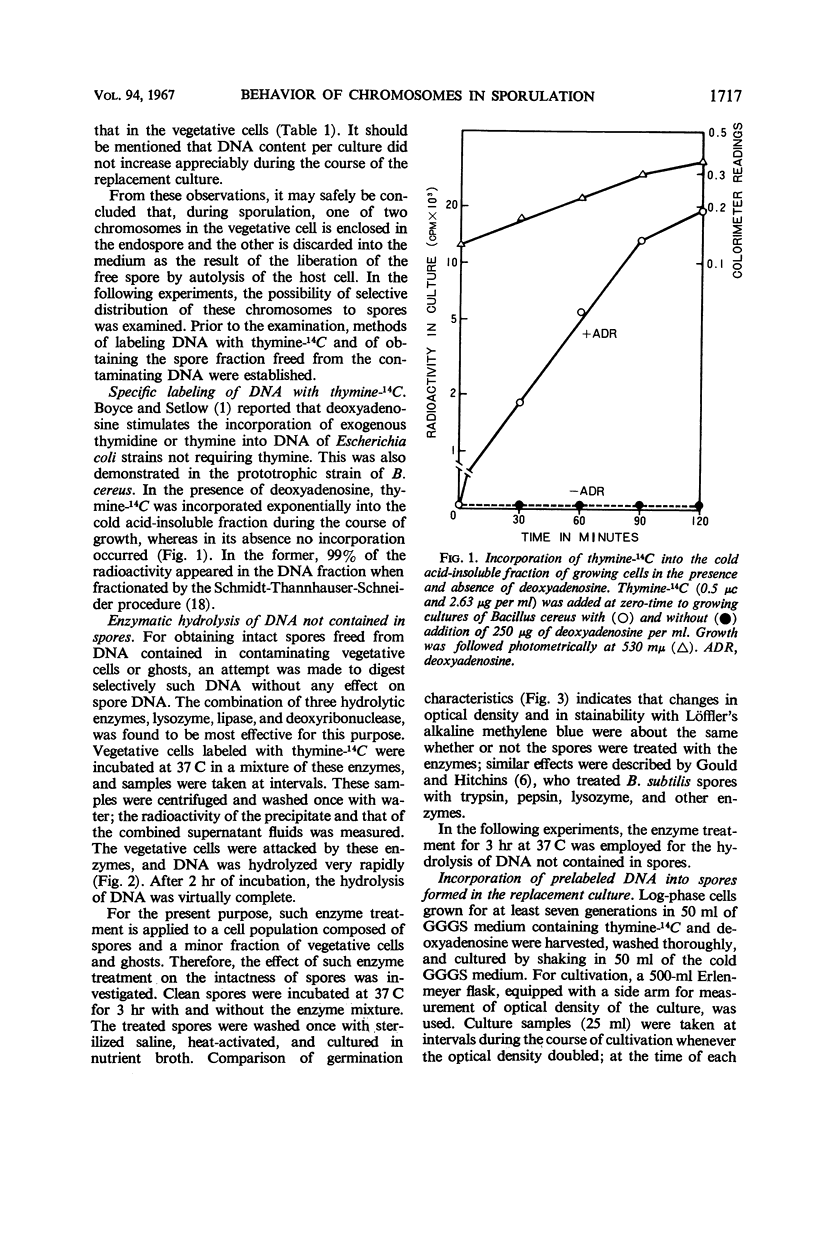
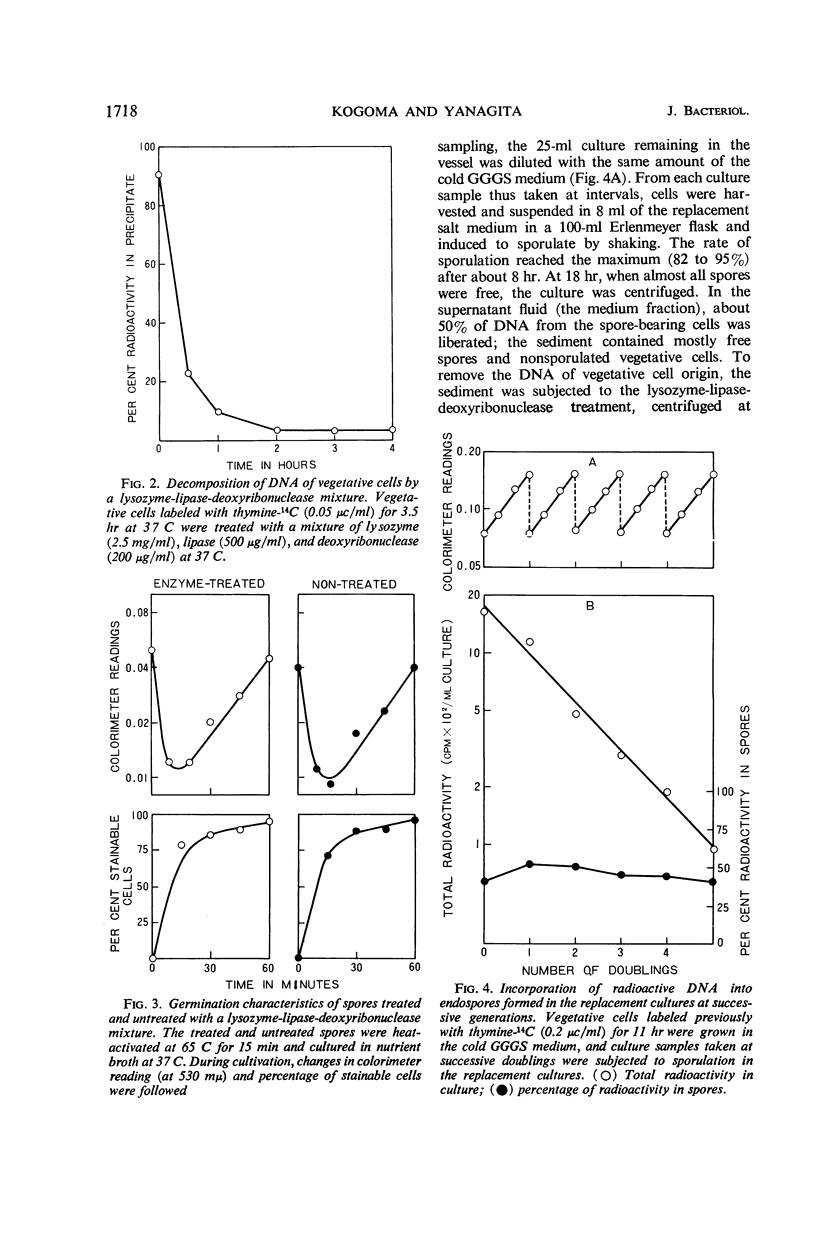
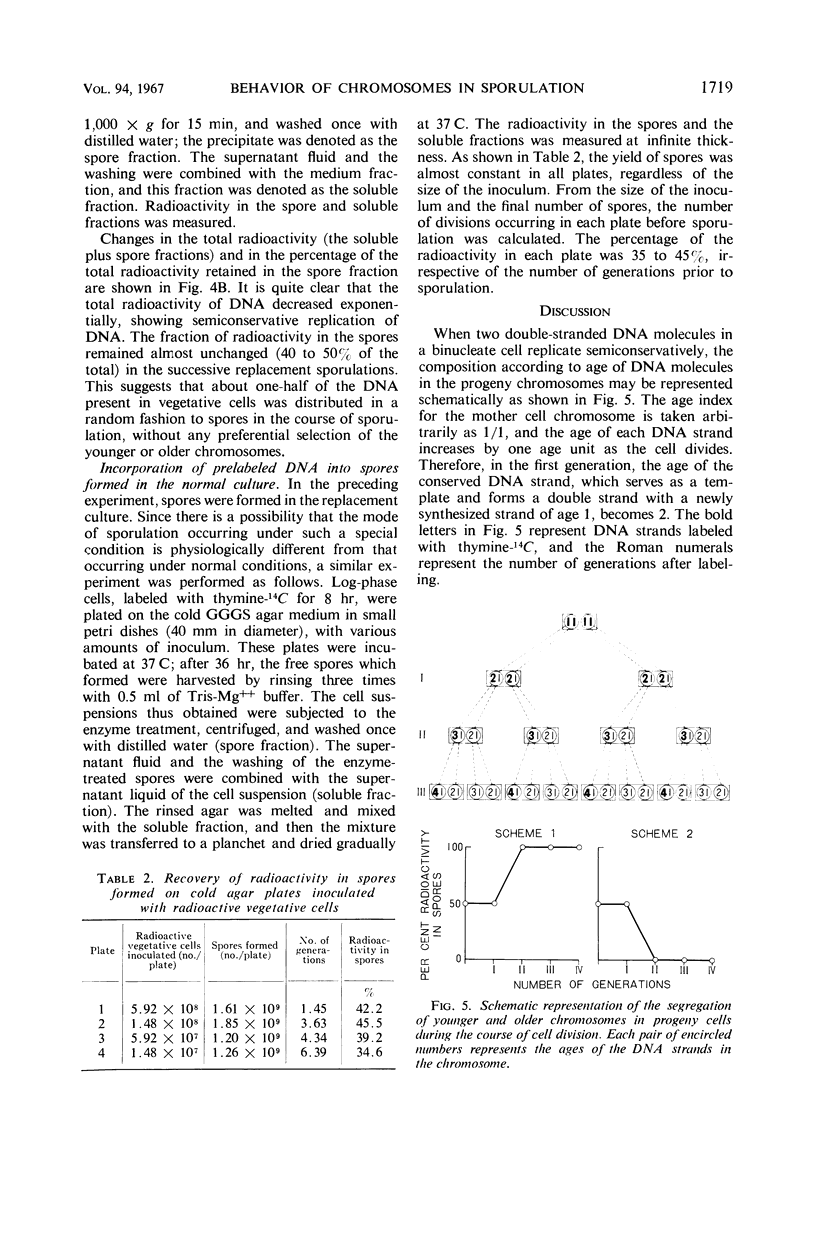
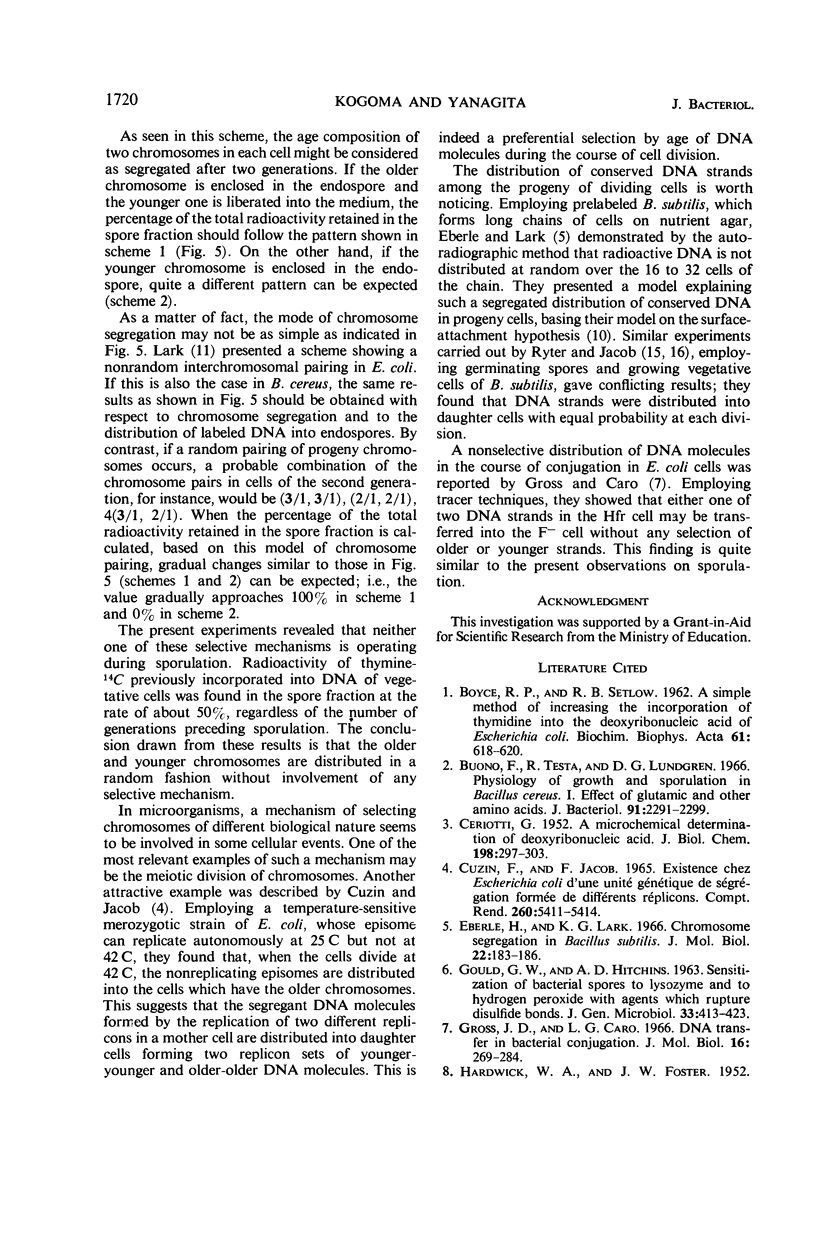
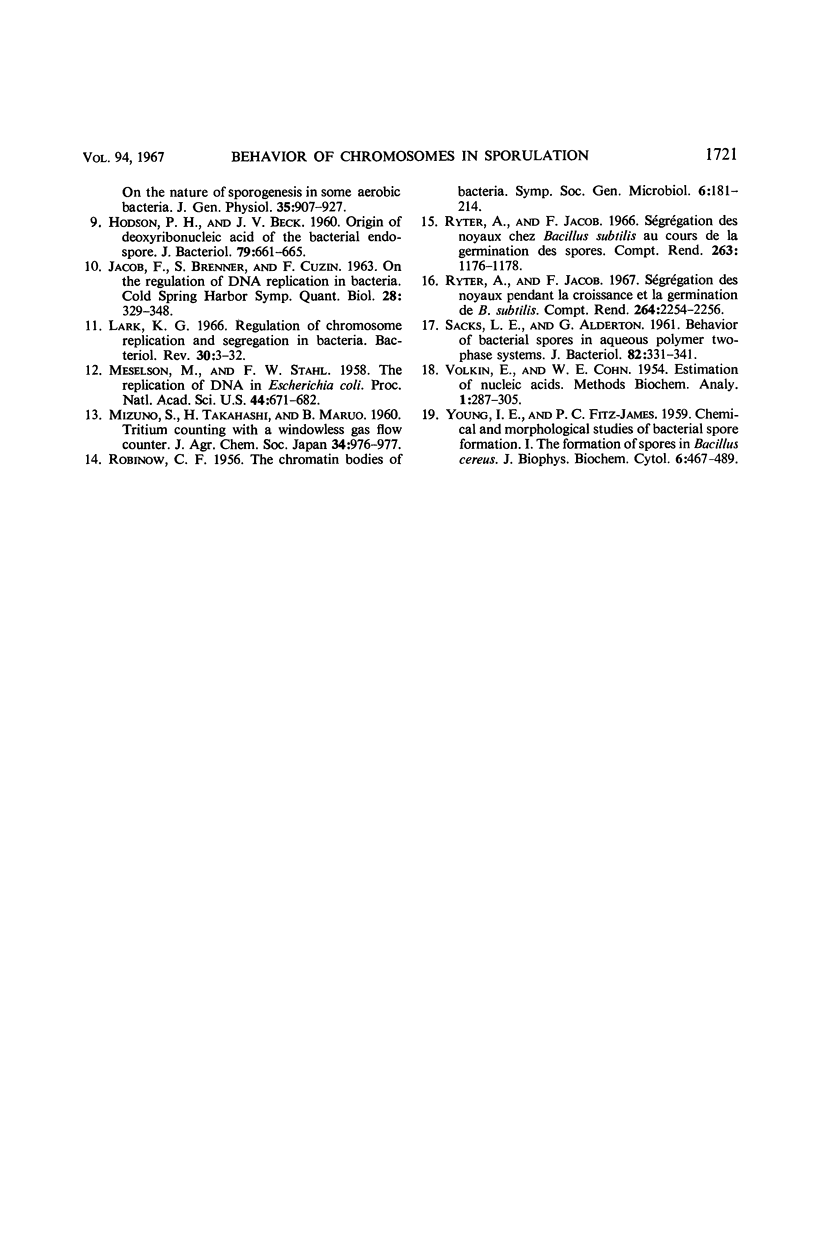
Selected References
These references are in PubMed. This may not be the complete list of references from this article.
- Buono F., Testa R., Lundgren D. G. Physiology of growth and sporulation in Bacillus cereus. I. Effect of glutamic and other amino acids. J Bacteriol. 1966 Jun;91(6):2291–2299. doi: 10.1128/jb.91.6.2291-2299.1966. [DOI] [PMC free article] [PubMed] [Google Scholar]
- CERIOTTI G. A microchemical determination of desoxyribonucleic acid. J Biol Chem. 1952 Sep;198(1):297–303. [PubMed] [Google Scholar]
- Cuzin F., Jacob F. Existence chez Escherichia coli d'une unité génétique de ségrétion formée de différents réplicons. C R Acad Sci Hebd Seances Acad Sci D. 1965 May 17;260(20):5411–5414. [PubMed] [Google Scholar]
- GOULD G. W., HITCHINS A. D. SENSITIZATION OF BACTERIAL SPORES TO LYSOZYME AND TO HYDROGEN PEROXIDE WITH AGENTS WHICH RUPTURE DISULPHIDE BONDS. J Gen Microbiol. 1963 Dec;33:413–423. doi: 10.1099/00221287-33-3-413. [DOI] [PubMed] [Google Scholar]
- Gross J. D., Caro L. G. DNA transfer in bacterial conjugation. J Mol Biol. 1966 Apr;16(2):269–284. doi: 10.1016/s0022-2836(66)80172-9. [DOI] [PubMed] [Google Scholar]
- HODSON P. H., BECK J. V. Origin of deoxyribonucleic acid of the bacterial endospore. J Bacteriol. 1960 May;79:661–665. doi: 10.1128/jb.79.5.661-665.1960. [DOI] [PMC free article] [PubMed] [Google Scholar]
- Lark K. G. Regulation of chromosome replication and segregation in bacteria. Bacteriol Rev. 1966 Mar;30(1):3–32. doi: 10.1128/br.30.1.3-32.1966. [DOI] [PMC free article] [PubMed] [Google Scholar]
- Meselson M., Stahl F. W. THE REPLICATION OF DNA IN ESCHERICHIA COLI. Proc Natl Acad Sci U S A. 1958 Jul 15;44(7):671–682. doi: 10.1073/pnas.44.7.671. [DOI] [PMC free article] [PubMed] [Google Scholar]
- Ryter A., Jacob F. Ségrégation des noyaux pendant la croissance et la germination de B. subtilis. C R Acad Sci Hebd Seances Acad Sci D. 1967 May 3;264(18):2254–2256. [PubMed] [Google Scholar]
- SACKS L. E., ALDERTON G. Behavior of bacterial spores in aqueous polymer two-phase systems. J Bacteriol. 1961 Sep;82:331–341. doi: 10.1128/jb.82.3.331-341.1961. [DOI] [PMC free article] [PubMed] [Google Scholar]
- VOLKIN E., COHN W. E. Estimation of nucleic acids. Methods Biochem Anal. 1954;1:287–305. doi: 10.1002/9780470110171.ch11. [DOI] [PubMed] [Google Scholar]


